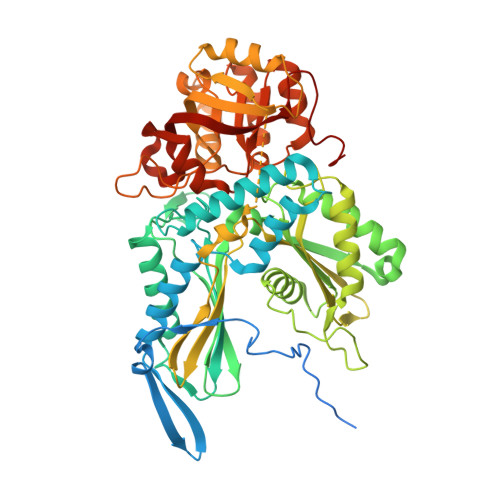Crystal Structures of Fumarate Hydratases from Leishmania major in a Complex with Inhibitor 2-Thiomalate.
Feliciano, P.R., Drennan, C.L., Nonato, M.C.(2019) ACS Chem Biol 14: 266-275
- PubMed: 30645090
- DOI: https://doi.org/10.1021/acschembio.8b00972
- Primary Citation of Related Structures:
6MSN, 6MSO - PubMed Abstract:
Leishmaniases affect the poorest people on earth and have no effective drug therapy. Here, we present the crystal structure of the mitochondrial isoform of class I fumarate hydratase (FH) from Leishmania major and compare it to the previously determined cytosolic Leishmania major isoform. We further describe the mechanism of action of the first class-specific FH inhibitor, 2-thiomalate, through X-ray crystallography and inhibition assays. Our crystal structures of both FH isoforms with inhibitor bound at 2.05 Å resolution and 1.60 Å resolution show high structural similarity. These structures further reveal that the selectivity of 2-thiomalate for class I FHs is due to direct coordination of the inhibitor to the unique Fe of the catalytic [4Fe-4S] cluster that is found in class I parasitic FHs but is absent from class II human FH. These studies provide the structural scaffold in order to exploit class I FHs as potential drug targets against leishmaniases as well as Chagas diseases, sleeping sickness, and malaria.
Organizational Affiliation:
Howard Hughes Medical Institute , Massachusetts Institute of Technology , Cambridge , Massachusetts 02139 , United States.
















